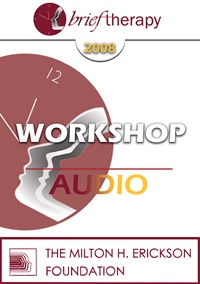
- Average Rating:
- Not yet rated
- Topic Areas:
- Workshops | Resistance | Religion | Binds | Brief Therapy | Hypnosis
- Categories:
- Brief Therapy Conference | Brief Therapy Conference 2008
- Faculty:
- Bill O'Hanlon, MS
- Duration:
- 2:18:23
- Format:
- Audio Only
- Original Program Date:
- Dec 14, 2008
- Short Description:
- Inclusive Therapy is a new model of therapy designed to deal with the ambivalence to change clients often bring to the therapy process. Participants will learn a gentle way to approach conflicted clients to dissolve resistance, binds and dissociation. This method can be especially useful in dealing with borderline or hostile clients.
- Price:
- $15.00 - Base Price
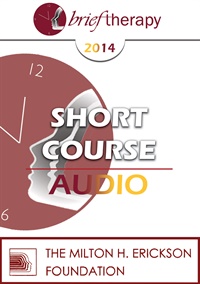
- Average Rating:
- Not yet rated
- Topic Areas:
- Trauma | Short Courses | Brief Therapy | Binds
- Categories:
- Brief Therapy Conference | Brief Therapy Conference 2014
- Faculty:
- John Lentz, D. Min.
- Duration:
- 1:23:01
- Format:
- Audio Only
- Original Program Date:
- Dec 11, 2014
- Short Description:
- This new advanced brief therapy approach uses positive double binds to do intentionally what happens naturally when everything seems to go right. It transforms trauma’s rigid thinking and can greatly assist your clients to heal, make better decisions and believe more positively in themselves and their future.
- Price:
- $15.00 - Base Price
Tags: Trauma Binds Brief Therapy
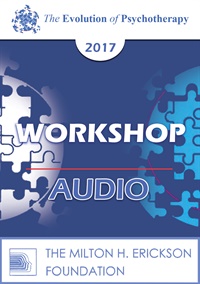
- Average Rating:
- Not yet rated
- Topic Areas:
- Workshops | Consciousness | Binds | Art and Creativity | Ericksonian Hypnosis and Therapy Techniques | Psychotherapy
- Bundle(s):
- Learning Track - EP17 Erickson Download
- Categories:
- Evolution of Psychotherapy | Evolution of Psychotherapy 2017 | Evolution of Psychotherapy Erickson Learning Track
- Faculty:
- Ernest Rossi, PhD | Kathryn Rossi, PhD
- Duration:
- 2:38:21
- Format:
- Audio Only
- Original Program Date:
- Dec 13, 2017
- Short Description:
- MHE's 1965 paper "A Special Inquiry with Aldous Huxley into the Nature and Character of Various States of Consciousness" will be used so everyone can experience their personal version of Deep Reflection, the Double Dissociation Double Bind and the Quantum Qualia of their private consciousness and cognition for facilitating gene expression and brain plasticity to optimize their own growing edges.
- Price:
- $15.00 - Base Price
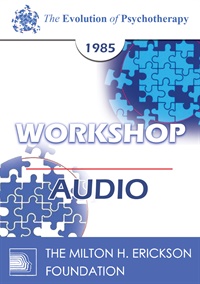
- Average Rating:
- Not yet rated
- Topic Areas:
- Workshops | Binds | Hypnosis | Psychotherapy | Resources | Hypnotherapy
- Categories:
- Evolution of Psychotherapy | Evolution of Psychotherapy 1985
- Faculty:
- Ernest Rossi, PhD
- Duration:
- 2 Hours 10 Minutes
- Format:
- Audio Only
- Original Program Date:
- Dec 13, 1985
- Short Description:
- Hypnosis continues as the "mother of the psychotherapies" by contributing new approaches to human facilitation. Specifically, we will learn to use the therapeutic double bind, symptom prescription, and ideodynamic channeling to assess and facilitate a patient's inner resources.
- Price:
- $15.00 - Base Price
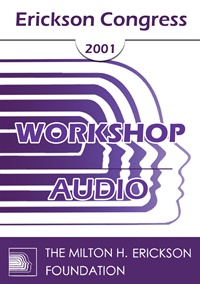
- Average Rating:
- Not yet rated
- Topic Areas:
- Workshops | Metaphors | Confusion Technique | Indirection | Binds | Suggestion
- Categories:
- Erickson Congress 2001 | Erickson Congress
- Faculty:
- Stephen Lankton, MSW
- Duration:
- 2:30:40
- Format:
- Audio Only
- Original Program Date:
- Dec 07, 2001
- Short Description:
- Participants will be guided through several exercises to help them learn and practice the construction of six forms of indirect suggestions, four therapeutic binds and four verbal confusion techniques. A demonstration using these forms will illustrate the implementation of this set of language techniques for the induction process and how they elaborate simple metaphor. Reasons for the use of indirect suggestions, binds and confusion in treatment and their effect will be addressed and demonstrated.
- Price:
- $15.00 - Base Price
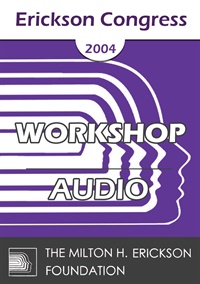
- Average Rating:
- Not yet rated
- Topic Areas:
- Workshops | Binds | Art and Creativity | Relationships
- Categories:
- Erickson Congress | Erickson Congress 2004
- Faculty:
- Robert Dilts, BA
- Duration:
- 2:06:34
- Format:
- Audio Only
- Original Program Date:
- Dec 02, 2004
- Short Description:
- A "double bind" is a special type of conflict which creates a "no-win" situation. According to anthropologist Gregory Bateson, such conflicts are at the root of both creativity and psychosis. The difference is whether or not one is able to identify and transcend the bind in an appropriate way. The most emotionally intense double binds occur in the context of significant interpersonal relationships. Such a struggle can also occur between the inner parts of a person. These types of unsolvable struggles are often at the root of both mental and physical illness. They can also arise during a person's attempts to heal and thwart progress towards wellness. This workshop will cover ways to identify double binds, the underlying conditions which create them, and some of the ways in which double binds can be resolved or transcended.
- Price:
- $15.00 - Base Price
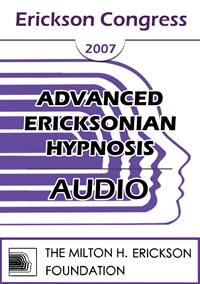
- Average Rating:
- Not yet rated
- Topic Areas:
- Workshops | Confusion Technique | Hypnosis | Indirection | Language of Hypnosis | Binds | Suggestion
- Categories:
- Erickson Congress | Erickson Congress 2007
- Faculty:
- Stephen Lankton, MSW
- Duration:
- 2:50:39
- Format:
- Audio Only
- Original Program Date:
- Dec 10, 2007
- Short Description:
- Participants will be guided through several exercises to help them learn and practice the construction of four forms of confusion technique, bring the number of indirect suggestion to six and the number of therapeutic binds to four. A demonstration using these forms will illustrate the implementations of this set of language techniques for the induction and treatment process.
- Price:
- $15.00 - Base Price
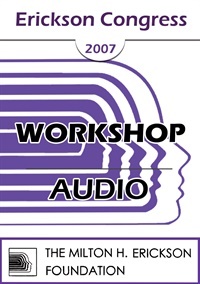
IC07 Workshop 26 - Indirect Suggestions & Therapeutic Binds in Hypnosis - Stephen Lankton, MSW, DAHB
- Average Rating:
- Not yet rated
- Topic Areas:
- Workshops | Ericksonian Hypnosis and Therapy Techniques | Hypnosis | Binds | Indirection | Language of Hypnosis | Suggestion
- Categories:
- Erickson Congress | Erickson Congress 2007
- Faculty:
- Stephen Lankton, MSW
- Duration:
- 1:53:33
- Format:
- Audio Only
- Original Program Date:
- Dec 07, 2007
- Short Description:
- This technique is among the most crucial to good therapy. Participants will be guided through several exercises to help them learn and practice the construction of six forms of indirect suggestions and four forms of binds. A demonstration using these forms will illustrate the implementation of this set of language techniques for the induction and treatment process. The use of indirect suggestions in further treatment will be outlined.
- Price:
- $15.00 - Base Price
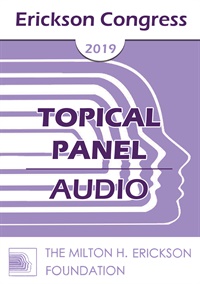
- Average Rating:
- Not yet rated
- Topic Areas:
- Workshops | Binds | Conflict | Therapist Development
- Categories:
- Erickson Congress | Erickson Congress 2019
- Faculty:
- Robert Dilts, BA
- Duration:
- 1 Hour 59 Minutes
- Format:
- Audio Only
- Original Program Date:
- Dec 12, 2019
- Short Description:
- A “double bind” is a special type of conflict which creates a “no-win” situation; i.e., a situation in which one is “damned if you do, and damned if you don’t.” According to anthropologist Gregory Bateson, who originally defined the notion of the double bind, such conflicts are at the root of both creativity and psychosis. The difference is whether or not one is able to identify and transcend the bind in an appropriate way. This workshop will cover some of the key skills necessary to identify the underlying conditions which create conflicts double binds, and thus to resolve them.
- Price:
- $15.00 - Base Price
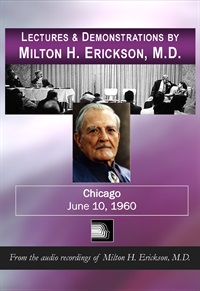
- Average Rating:
- Not yet rated
- Topic Areas:
- Hypnosis | Ericksonian Hypnosis and Therapy Techniques | Milton Erickson | Binds | Resistance
- Categories:
- Erickson Materials | Lectures & Demonstrations | Milton H. Erickson Collections
- Faculty:
- Milton H. Erickson, MD
- Duration:
- 3:57:01
- Format:
- Audio Only
- Original Program Date:
- Jun 10, 1960
- Short Description:
- During this seminar, Dr. Erickson describes essential skills for working with resistant patients, the use of permissive language, ordeal therapy, geometric progression, and therapeutic double binds. Erickson conducts a demonstration, answers questions from the audience, and elaborates on his thinking with case illustrations that include: sexual dysfunction, stuttering, bed wetting, childhood eating disorders, compulsive habits, phobias and self-defeating behavior.
- Price:
- $40.00 - Base Price

